Rob Bignell's Blog, page 361
August 30, 2013
Offer your readers a photo gallery page
If you’re 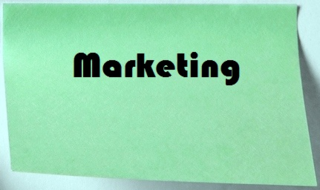 serious about receiving media attention – either from newspapers and magazines or from bloggers and online journals – you’ll want to have a photo gallery page on your website. After you’ve been interviewed or if your book is being reviewed, that writer will want pictures of you that can be used with the piece.
serious about receiving media attention – either from newspapers and magazines or from bloggers and online journals – you’ll want to have a photo gallery page on your website. After you’ve been interviewed or if your book is being reviewed, that writer will want pictures of you that can be used with the piece.
Readers also will enjoy taking a peak at these pictures. Putting a face to the author’s name is like knowing a little secret about the book.
You should offer at least three and upward to six photos. They definitely should include:
g Book cover – Just the front cover is fine. This photo typically most accompanies articles about your book.
g Author’s publicity photo – A head shot is fine, but it should look professional. If it’s a snapshot or looks like a photo from a police lineup, get a new one. The photo also should be current; if you’ve changed your hairstyle, post a new photo.
g Author interacting with book’s subject matter – This should be a photo of the author doing something that relates to the book’s subject. For example, if the book is about castles, show the author in front of the Tower of London.
Other photos in the gallery might show the author interacting with fans, speaking to a group, or receiving an award. If nonfiction, the photos might be of important objects in the book, such as a map and compass if a book about orienteering.
The photos appearing on the gallery should be large enough that they can be downloaded and reproduced by the media. Their size should be at least 100,000 bytes (You can determine this by right clicking on the photo, then clicking on “Properties” on the pop-up screen, and looking for the number after “Size”). Photographers will know this is an oversimplistic explanation of how large the photo should be, but we’re trying to keep it all simple here. Lastly, the photos should be .jpegs.
Photos can be presented in a number of ways, such as all appearing on a single page as thumbnails or presented in a slideshow. You’re typically only limited by what the website template you’ve purchased and your own talents.
Each photograph you post also needs a caption (aka a “cutline”). The caption should describe the photo by answering as many of the 5 W’s and 1 H (who, what, when, where, why and how) as possible. For example, a caption showing the author at a book signing might read, “Mary Q. Writer signs copies of her latest book, “How to Make a Square Peg Fit a Round Hole with a Hammer” at Yarns and Fables Bookstore in Los Angeles on Sept. 26, 2013.” And don’t forget to include credit for who took the photo.
Simply use “Photo Gallery” as the page header. An explanation of the page should appear below the header with permissions outlining who may use the photo and under what conditions.
Here’s a sample photo gallery page.
Need an editor? Having your book, business document or academic paper proofread or edited before submitting it can prove invaluable. In an economic climate where you face heavy competition, your writing needs a second eye to give you the edge. I can provide that second eye.
Related articles
 Pages needed for website promoting your book
Pages needed for website promoting your book How to construct your website's home page
How to construct your website's home page Decide what your book's website will look like
Decide what your book's website will look like Ensure your book's website is navigable
Ensure your book's website is navigable How to write a press release for your book
How to write a press release for your book
August 29, 2013
Formatting main text for your book
Once you’ve  got your book with the front and back matter completed, the next step is to place all of that text into a form that can be uploaded and printing. Essentially, you’re creating on file on the computer that is exactly like how the book will appear when printed. This is called formatting.
got your book with the front and back matter completed, the next step is to place all of that text into a form that can be uploaded and printing. Essentially, you’re creating on file on the computer that is exactly like how the book will appear when printed. This is called formatting.
You can hire someone else to do your formatting, whether it be a freelancer or the self-publishing company itself. This will get expensive, however, and may not always yield the results you want, delaying the publication process. You can do it yourself as well, though you may need software programs, such as InDesign, for this effort. Unless purchased used, InDesign will be more expensive than hiring a freelancer or going with the self-publishing company. There’s also the added problem of learning how to use such software, and you want to be a writer, not a designer. Still, if you plan to write a series of books that will involve pictures, tables, charts, illustrations and so forth in them, then purchasing a software program and taking some time to learn the program (There are plenty of books and online tutorials about how to do this.) in the long run is well worth the trouble.
If use just plain text (such as a novel) or a book with only a few photos, or are purely writing an ebook, your formatting can be done in Microsoft Word. Be forewarned, however – and this comes from someone who knows how to use design software – formatting a printed book in Word will be an extremely difficult and frustrating project. In addition, if not done correctly, the tracking (or spacing between letters and words on a single line of type) can look unprofessional.
The first rule of formatting is keep the entire book is one document. So if you’ve got the table of contents, preface, main body text and index all in different files, it’s time to cut and paste them into one file. Create a backup of this file so that you have an original to refer to and just in case the file you’re formatting gets all messed up in the process.
Then establish the answers to a number of important decisions that will be necessary to formatting the book:
g What will the book’s size be (its width and height)?
g How many pages will the book be?
g What will be the style (typeface and point size) for the text, headers, subheads and section heads, sidebars and breakout boxes (hopefully you’ve already established this)?
g What will be the style for the page numbers/book title/author’s name that typically appears on each page?
We’ll discuss each of these topics in upcoming entries.
If you need a professional designer, be sure to address each of these issues with her. You can find designers and have them bid on your project simply be typing “freelance book designer” into a search engine. Specific sites where you can post your project and have designers try to solicit the job include Guru.com, Elance.com and ifreelance.com.
Need an editor? Having your book, business document or academic paper proofread or edited before submitting it can prove invaluable. In an economic climate where you face heavy competition, your writing needs a second eye to give you the edge. I can provide that second eye.
Related articles
 Select best typeface for your book
Select best typeface for your book How your text should appear in a formatted book
How your text should appear in a formatted book Factors to consider in selecting a self-publisher
Factors to consider in selecting a self-publisher
August 28, 2013
Cracking a bad habit: cement vs. concrete
Lately a 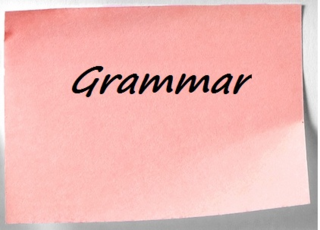 bad habit has been hardening among writers and announcers: A few keep confusing “cement” and “concrete.”
bad habit has been hardening among writers and announcers: A few keep confusing “cement” and “concrete.”
The two words are not synonymous.
“Cement” is a powder that when mixed with water and other materials, like gravel, can solidify into a hard, stone-like substance called “concrete.”
So, you can’t have a “cement bridge” or a “cement building,” as that would suggest they are made of powder.
Need an editor? Having your book, business document or academic paper proofread or edited before submitting it can prove invaluable. In an economic climate where you face heavy competition, your writing needs a second eye to give you the edge. I can provide that second eye.
Related articles
 Get it entirely right: All together vs. altogether
Get it entirely right: All together vs. altogether Delete bookisms in your story's dialogue
Delete bookisms in your story's dialogue
August 27, 2013
Use fragments for rhetorical effect
Should 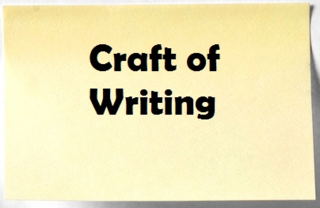 you use fragments in your writing? Your high school English teacher almost certainly said “No!” and marked it with a red pen.
you use fragments in your writing? Your high school English teacher almost certainly said “No!” and marked it with a red pen.
Fragments are okay if they serve a rhetorical effect, such as the realization of something. For example: She realized something was behind her. Something large. Something breathing heavily.
Still, fragments should be used rarely. For a rhetorical effect to be used effectively, it needs to stand out from the rest of the text.
Fragments need revising largely if they don’t really serve this effect or if they are confusing to understand because they weren't a complete sentence.
Need an editor? Having your book, business document or academic paper proofread or edited before submitting it can prove invaluable. In an economic climate where you face heavy competition, your writing needs a second eye to give you the edge. I can provide that second eye.
Related articles
 Five style issues to watch for in your story
Five style issues to watch for in your story Get it entirely right: All together vs. altogether
Get it entirely right: All together vs. altogether Constructive tip: Build up vs. build-up vs. buildup
Constructive tip: Build up vs. build-up vs. buildup
August 26, 2013
Make final words of your story count
After the 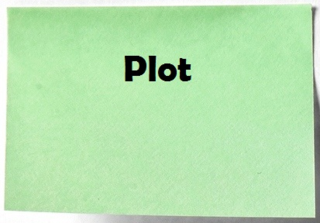 story’s falling action comes another brief section that wraps up the story. This conclusion is known as the denouement (pronounced day-noo-mon).
story’s falling action comes another brief section that wraps up the story. This conclusion is known as the denouement (pronounced day-noo-mon).
During the
denouement – which usually is only a few paragraphs and sometimes as short as a single sentence long – the loose ends of the story are tied up. Usually there are minor questions, often not directly involving the main character, that need to be solved. In addition, this part of the story can serve as a catharsis for readers, relieving tension created in the story by offering a humor or revealing the story’s theme.
A good example of a denouement is the final scene of the “Star Trek: The Original Series” episode “The Trouble with Tribbles”. The episode involved Captain Kirk and crew using tribbles to uncover a Klingon plot to prevent the Federation from colonizing Sherman’s Planet. During the episode, the number of tribbles (which are born pregnant) threaten to overrun Kirk’s ship and the space station containing the wheat the Federation needs to develop the planet. In a humorous concluding scene, two small yet nagging questions are answered: Will the Federation be able to colonize the planet and what happened to all of the tribbles aboard the Enterprise? A dispatch from Starfleet quickly answers the first question and then Scotty reluctantly reveals he beamed the tribbles aboard the Klingon ship just before it warped out of orbit.
Sometimes the denouement is known as the “resolution”. It also is casually referred to as the “conclusion” or the “ending”.
Genre stories often have expected endings, called “ritual endings”. Mysteries, for example, include the main character reciting how he made the connections that that led him to solve the crime. “Star Trek” episodes typically end with the exchange of a joke that relates to the story’s theme. Part of the fun of such stories is seeing how the characters reach this ritual ending.
When writing the conclusion of your story, be sure to follow a few simple guidelines:
g The conclusion must complete the action of the story - At this point in the story, the main character clearly has either overcome the central problem or has so failed that there is no hope of him ever overcoming it. If the conclusion isn’t connected to the story’s action, it will appear tacked on.
g Reaching the ritual ending must always be in doubt - If you do use a ritual ending, generate enough dramatic tension that the reader remains uncertain if the crime will be solved or that order will be restored so that a humorous ending is possible. Simply following a plot structure without dramatic tension is akin to creating a “cookie-cutter” story. The story would be the same as any other and lack any unique flavor.
g Your ending must surprise and delight - Often what is most memorable about a story is its conclusion. The conclusion does mark the last words that are read, after all. Make them count.
Need an editor? Having your book, business document or academic paper proofread or edited before submitting it can prove invaluable. In an economic climate where you face heavy competition, your writing needs a second eye to give you the edge. I can provide that second eye.
Related articles
 Create a riveting opener for your story
Create a riveting opener for your story Use Man vs. God(s) conflict to heighten tension
Use Man vs. God(s) conflict to heighten tension Unfold action to develop a stronger story
Unfold action to develop a stronger story Your story: Thrusts and counterthrusts
Your story: Thrusts and counterthrusts How to get readers engaged in your story
How to get readers engaged in your story
August 25, 2013
How to find lit agents, publishers for your writing
Once you’ve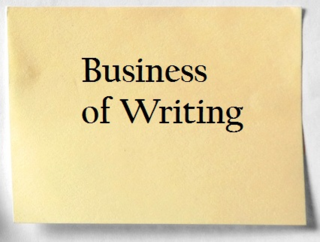 written your novel or short story, the questions arises of where to you send it. If following the traditional publishing route, the answer depends on what type of work you’ve written.
written your novel or short story, the questions arises of where to you send it. If following the traditional publishing route, the answer depends on what type of work you’ve written.
If a novel, you need a list of literary agents. There are several reputable guidebooks (Writers Digest’s guides are fairly good) for sale at bookstores or online that list literary agents, whether or not they’re accepting submissions, the type of writing they handle, their unique submission requirements, and contact information. You’ll need to spend some time perusing the guidebook to create your own list of the literary agents that would be most interested in your work. Make sure the guidebook you use is no more than a year old.
With novels, don’t limit yourself to literary agents, however. Also submit your work to publishing houses. A few accept unsolicited submissions. Lists of those companies also appear in published guides, on the same library or bookstore shelves where you’ll find the literary agents guide. Should a publishing house show interest in your work, immediately reach out to a literary agent to represent you; you’ll find that at least a couple will be interested.
If you’ve written a short story, seek out magazines that publish works in your genre. Published guides exist as well for this, but as magazines can rise and fall in a matter of months, your best bet really is to simply type into an online search engine the genre you want to publish in, such as “science fiction magazines” or “murder mystery magazines.” You’ll have to do some sifting but should come up with a list of a dozen or more magazines in a matter of a few minutes. In fact, you’ll probably discover a number of magazines (especially emagazines) that you never knew existed.
Should you decide to self-publish, you’ll want a list of companies that offer such services. Simply type “self-publishing companies” into a search engine. You’ll come across a number of sites that compare these various companies as well as the company’s sites themselves. Spend a little time doing some comparison shopping; all offer various services (such as designing a cover, editing your text, formatting the book, etc.) at varying prices, and all provide different outlets for marketing your book as well as different royalties.
A note of caution: With online guides, always be wary … some of those lists are quite old, and even those created just a couple of years ago can be outdated. In addition, some of those lists are created with the intention of scamming you – for example, a few so-called literary agents recommend specific editors (who happen to work for them or who they get a kickback from) to work with you on your book with the suggestion that they then might take it on. It’s a highly shady practice. Still, some of the lists you’ll find online are updated regularly, giving you the opportunity to submit to new magazine editors before they’re inundated with short stories and novellas once they’re listed in a mainstream guide such as what Writers Digest publishes.
Need an editor? Having your book, business document or academic paper proofread or edited before submitting it can prove invaluable. In an economic climate where you face heavy competition, your writing needs a second eye to give you the edge. I can provide that second eye.
Related articles
 How to find a good editor or proofreader
How to find a good editor or proofreader Common 'first draft-itis' symptoms to look for
Common 'first draft-itis' symptoms to look for
August 24, 2013
Why writers must learn to handle rejection
You’ve just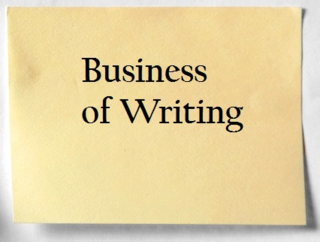 spent months putting your heart and soul into writing a book. You’ve revised it, you’ve paid to have it edited, you’ve revised it again, you’ve missed out on sleep, you’ve skimped on time with family. You can’t imagine the story getting any better. You send it out.
spent months putting your heart and soul into writing a book. You’ve revised it, you’ve paid to have it edited, you’ve revised it again, you’ve missed out on sleep, you’ve skimped on time with family. You can’t imagine the story getting any better. You send it out.
A few weeks (or even worse, a few days) later, the publisher or magazine editor or literary agent sends you a rejection slip.
Probably you got no explanation as to why the piece was rejected. Maybe you were lucky enough to get a form checklist in which a quickly scribbled checkmark was made next to some vague claim like “character not developed enough.”
Do you give up or keep sending out the piece?
If you want to be a writer, you must persist in the face of self-doubt. You need to re-examine your piece, possibly revise it some more, and send it again.
Knowing why your piece was rejected in the first place certainly would be a plus when revising it. Unfortunately, there are hundreds of reasons as to why the editor didn’t place your piece into the take-a-second-look pile.
Perhaps the most common cause for rejection is that the piece didn’t match what the publisher/editor/lit agent was looking for. They might not consider your piece saleable to their respective audiences or markets. Because of this, meticulously researching the kind of works that your favorite publishing house or magazine publish is vital.
Having said that, your piece also needs to be unique in some way. A book publisher or magazine editor doesn’t want to publish cookie cutter versions of what they’ve previously printed. They may want something similar, but they want it to be something different as well. Given this, if you are writing cookie cutter pieces (and shame on you for being a hack!), you may want to find a place that is looking to cash in on the latest book craze by wanting to publish its own line of vampire or shopaholic stories.
Regardless, take heart: Your story probably is good (and I know you’re not a hack!). Recognize, however, that there are a lot of other good writers producing good stories and books. Many of them also received rejection slips.
Also, don’t forget that the number of publishing houses and magazines are shrinking. Thanks to the soft economy and competition from the Internet and self-publishing industries, fewer books are being publishing. Often there’s a demand for very niche writing, however – so while an adventure short story may not have many markets, there may be a demand for articles about backpacking into little known, wild backcountry. In addition, you may want to consider publishing on an Internet magazine.
Considering this, sometimes it’s simply a matter of finding the right editor before another writer does. My own rejected short story "I Hold the World but as the World" was submitted on its second go around to an editor who didn’t want it for his magazine but did believe it fit nicely into an anthology he wanted to publish. If I had stuffed the story into a box relegated to the attic, it never would have been published. Lucky I was, but such luck helped open the way to get other stories and articles published.
So remain strong. As science fiction writer Brian Aldiss once wrote, “Writers must fortify themselves with pride and egotism as best they can. The process is analogous to using sandbags and loose timbers to protect a house against flood.”
Fortify yourself, and soon the flood of rejections will stop coming.
Need an editor? Having your book, business document or academic paper proofread or edited before submitting it can prove invaluable. In an economic climate where you face heavy competition, your writing needs a second eye to give you the edge. I can provide that second eye.
Related articles
 Writing success: Talent or hard work?
Writing success: Talent or hard work? How to find a good editor or proofreader
How to find a good editor or proofreader
August 23, 2013
Offer readers ‘Interview with the Author Page’
Readers love 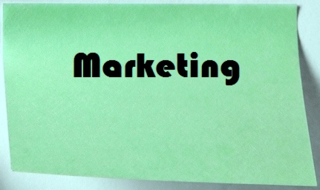 to learn about the authors of their favorite books. You can help foster that love – and in doing so get readers to purchase your next book – by including a page on your website in which you are interviewed.
to learn about the authors of their favorite books. You can help foster that love – and in doing so get readers to purchase your next book – by including a page on your website in which you are interviewed.
The media also will appreciate the interview. From it, any intrepid reporter or blogger will be able to draw quotes, anecdotes and details to make their article or entry more complete.
A good way to present the interview is as a straight Q&A. Ideally, you’ll get someone to interview you, and then the interview can be transcribed, edited and posted. If you go this route – rather than simply write your own answers to your own questions – be sure to include the name of the interviewer, her credentials, and the date and place of the interview.
When posting the interview, place the questions or the interviewer’s portion of the dialogue in boldface. This will make identifying the author’s answers easier for readers.
Don’t worry about the text on this page running a couple of thousand of words. Any visitor to your website who opts to come to this page probably wants to read a long interview so that they can come to know the author better.
Possible questions that the interviewer must ask of the author for this page include:
All writers
g Why did you decide to write this book?
g What kind of research did you do for this book? What were you surprised to learn?
g What’s your next book going to be about? (ask this near the end of the interview)
g What question would you like to be asked that I and other interviews have failed to ask? (make this the last question)
Novelists
g How would you describe what the book is about?
g Ask specific questions about the main character or some unique quality of the book, something that a reader of the book would know about.
g Who has influenced you the most as a writer?
g I want to mention a few authors and ask you to share your opinions of them.
g Any advice for aspiring writers?
Nonfiction authors
g How did you become interested in the subject of the book?
g Ask specific questions about the book's thesis, getting the author to defend it.
g Ask the writer to share a secret or insider’s tip about the book’s subject.
g Ask the writer to comment on a recent news story that deals with the book’s subject.
Potential titles for this web page include “Interview with the Author” or “Q&A with the Author.”
Finally, include a picture of yourself (the author) on this page. A video or audio recording of you answering interview questions also is a good idea but not necessary (We are dealing with readers here, fortunately!).
Read a sample Interview with the Author page.
Need an editor? Having your book, business document or academic paper proofread or edited before submitting it can prove invaluable. In an economic climate where you face heavy competition, your writing needs a second eye to give you the edge. I can provide that second eye.
Related articles
 Decide what your book's website will look like
Decide what your book's website will look like Pages needed for website promoting your book
Pages needed for website promoting your book
August 22, 2013
Forewords, prefaces and introductions
Before your actual book begins – particularly if writing nonfiction – you may want to include material that that introduces readers to your book. The idea of these introductions is in large part to establish why readers actually should read the book. 
There are three general types of introductions that you might include in your book:
g Foreword – This is an essay about the book written by someone other than the book’s author. Ideally, a recognizable name in the book’s genre or subject matter writes the foreword. As the author, you might consider seeking out well-known names to write the foreword. It is always signed, meaning the essay’s author gives his name and usually the date and place of writing.
g Preface – This is written by the book’s author. Typically, it tells how the author came up with the idea for the book, explains the importance of the subject matter (or the book’s approach to it), and may include a list of thanks and acknowledgements at its end. It’s usually signed with the date and place of writing given. The preface always comes after the foreword.
g Classic introduction – Traditionally, an introduction gives information that the reader ought to know to better understand the book, such as how it’s organized, how it’s laid out, special features, and so on. In that sense, it’s a like set of explanatory notes.
Some authors combine the preface and introduction into one and label it as an introduction. I did that in my book “Hikes with Tykes” because explaining how the book came to be was essential to understanding how the volume was organized. Some authors also opt for an acknowledgements page rather than listing the names at the end of a preface or an introduction; other authors use both methods in the same book, saving the acknowledgements page for the most special contributions.
Page numbers for the foreword and preface typically are done in Roman numerals (i, ii, iii) while the introduction is in Arabic numbers (1, 2, 3).
Authors also should know that very few readers actually will sift through any of this introductory material. After all, most readers don’t need to be convinced to read the book as anyone considering such a purchase probably will rely on the back cover blurb, reviews by other readers, or maybe a quick paging through to see what the various chapters cover. Still, indulge that small fraction of readers who do look at forewords, prefaces and introductions, as they will appreciate gaining insights into your book from this material.
Need an editor? Having your book, business document or academic paper proofread or edited before submitting it can prove invaluable. In an economic climate where you face heavy competition, your writing needs a second eye to give you the edge. I can provide that second eye.
Related articles
 Decide what your book's website will look like
Decide what your book's website will look like Pages needed for website promoting your book
Pages needed for website promoting your book
Editing client releases political crime thriller
A recent editing  client of mine, Mark Policinski, has published his first novel, “Castooli County to DC: Monster Hunt.” A political crime thriller, the novel follows the twin efforts of Capitol Hill aide Joe Hickcock and Upper Peninsula Sheriff Arthur Bract as they solve a murder case that may lead to the president himself! You can purchase “Castooli County to DC” online.
client of mine, Mark Policinski, has published his first novel, “Castooli County to DC: Monster Hunt.” A political crime thriller, the novel follows the twin efforts of Capitol Hill aide Joe Hickcock and Upper Peninsula Sheriff Arthur Bract as they solve a murder case that may lead to the president himself! You can purchase “Castooli County to DC” online.
Need an editor? Having your book, business document or academic paper proofread or edited before submitting it can prove invaluable. In an economic climate where you face heavy competition, your writing needs a second eye to give you the edge. I can provide that second eye.
Related articles
 Editing client releases adopting orphans memoir
Editing client releases adopting orphans memoir Editing client publishes first novel, 'The Highway'
Editing client publishes first novel, 'The Highway' Editing client releases supernatural thriller
Editing client releases supernatural thriller Editing client releases adventure/crime novel
Editing client releases adventure/crime novel Editing client, Ed Wyns, publishes first novel
Editing client, Ed Wyns, publishes first novel



